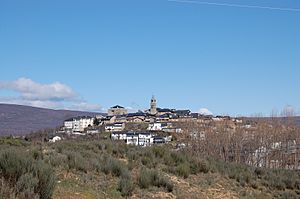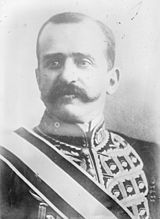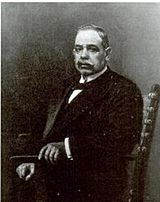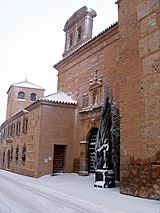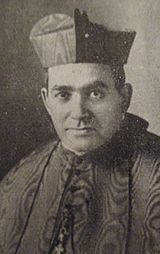Jesús Requejo San Román facts for kids
Quick facts for kids
Jesús Requejo San Román
|
|
|---|---|
 |
|
| Born |
Jesús Requejo San Román
22 February 1880 Puebla de Sanabria, Spain
|
| Died | 16 August 1936 (aged 56) Los Yébenes, Spain
|
| Nationality | Spanish |
| Occupation | property registrar |
| Known for | Christian martyr |
| Political party | Comunión Tradicionalista |
Jesús Requejo San Román (born February 22, 1880 – died August 16, 1936) was a Spanish Catholic leader and politician. The Catholic Church considers him a martyr, which means he died for his faith. He is also a candidate for sainthood.
Jesús Requejo was well-known in the Spanish provinces of Zamora and Toledo. He worked hard to improve education, help people in need, and support farmers' groups. His important book, Principios de Orientación Social, shared his ideas about society.
His political views changed over time. He started with a center-left party, then joined a Catholic group called Acción Católica. Eventually, he became part of the Carlist movement, which was a very traditional political group. In the mid-1930s, his career reached its peak. He led the Carlist party in Toledo and was elected to the Spanish parliament, the Cortes, in 1936.
Contents
Early Life and Family Background

The Requejo family was a noble family from the region of León in Spain. For many centuries, no one from the family became famous. This changed in the mid-1800s when one part of the family became powerful Liberals in the province of Zamora.
Jesús Requejo's father, Víctor Requejo Rodríguez, was a middle-class court clerk in Puebla de Sanabria. His mother was Josefa San Román San Román. They lived in the village of Castro de Sanabria. Jesús was one of four sons.
From a young age, Jesús was very religious and wanted to become a priest. He studied at seminaries in Puebla de Sanabria and Astorga. He was an excellent student. However, he decided not to become a priest just before finishing his studies.
He later earned his high school degree from the Jesuits in Cáceres in 1900. He then studied law at the University of Valladolid, finishing in 1903. He continued his studies at the University of Salamanca, earning a doctorate in 1906. His doctoral paper was highly praised.
In 1906, Jesús married his cousin, Antonia San Román San Román. She was from Puebla de Sanabria. The couple settled there. By 1908, Jesús was working as a lawyer.
Jesús and Antonia had one son, Antonio Requejo San Román (1907-1936). Antonio also studied law. Sadly, he was arrested and executed with his father during the Spanish Civil War.
Political Beginnings and Social Work
The Requejo family had Liberal political beliefs, and Jesús followed this path at first. In the early 1900s, he began writing for Heraldo de Zamora, a major Liberal newspaper. He wrote about election campaigns and supported Liberal leaders.
Jesús's ideas were a bit different. He cared about social justice and the struggles of workers. He encouraged them and believed their time for change would come. However, he also joined a conservative committee in his town in 1907.
In 1909, Requejo was elected to the town council of Puebla. He was very active as a councillor. The same year, he began training to become a notary, a legal official. He became a notary soon after. In 1912, he passed exams to become a property registrar, managing property records. He was assigned to Puebla de Sanabria, his hometown. He resigned from the town council due to his new duties.
By the mid-1910s, he was known as "doctor en derecho" (doctor of law). He served on committees that evaluated people for academic jobs. He also attended national conferences.
In the late 1910s and early 1920s, Requejo remained connected to the Liberal party. He worked with other Liberal leaders. Besides his legal jobs, he became more involved in social projects.
In 1915, he helped start a Catholic farmers' union. He also worked to provide affordable loans for farmers. He wrote articles about farming policies. In 1917, he supported Liberal efforts to improve education. He even worked briefly in Madrid on a public education project.
In Puebla, Requejo opened a dormitory for the poor. He also tried to start a high school. In 1920, he donated money for a future school and funded scholarships for poor teenagers. By the early 1920s, he was a respected figure in his county.
Moving to Madridejos and Catholic Activism
In 1924, Requejo was transferred to Madridejos in Toledo province as a property registrar. He was already an expert in real estate law and published articles about it. In Madridejos, he continued his work in charity and education.
He gave money to projects that helped the poor and funded scholarships for children. He also helped organize cultural events. He worked hard to establish a college in Madridejos, which opened successfully in 1928. This college was the second in the province to offer high school education.
While Requejo's public work in Puebla de Sanabria had some Catholic elements, in Madridejos, it became much more focused on religion. He paid for the education of several seminarians (students training to be priests). He and his wife helped set up a college for girls who wanted to join religious orders.
He donated the money he earned from his book Tierra Santa y Roma (1927) to a Catholic charity. In 1930, he and his wife became godparents to José Luis Martín Descalzo, who later became a famous writer and priest. Requejo also worked with the local church to reduce Protestant influence in the nearby town of Camuñas.
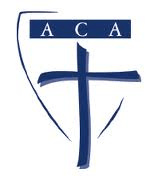
By the late 1920s, Requejo was highly respected in Madridejos. People saw him as someone who believed education brought progress and who worked hard to help his community. He became known as the local "champion of culture."
He was not involved in politics during the dictatorship of Miguel Primo de Rivera. After the dictatorship ended, he became deeply involved in Catholic Action. He attended its first national meeting in 1930 and was close to important Catholic leaders. He even wrote a pamphlet suggesting new ways to organize Catholic Action. This work became like a second job for him, especially since he lived part-time in Madridejos and part-time in Madrid.
The Second Spanish Republic and Carlist Politics
It's not clear how Requejo felt about the monarchy falling and the Republic starting in 1931. His earlier writings suggested he might have been open to different forms of government. In 1931, he remained active in the Red Cross and a group supporting education.
However, in 1932, he began to oppose the government's policies. He protested against schools being forced to remove religious teaching. He also defended religious property, which was being targeted by new laws. He wrote articles in the press, urging people to pray, spread their message, and donate money. He also joined Catholic farmers' unions.
In 1932, Requejo published El Cardenal Segura, the first biography of a leading Catholic cardinal. The book praised the cardinal and became very popular. Since the cardinal had been expelled from Spain by the new Republican government, the book showed Requejo's strong political stance.
He also published other pamphlets that criticized the government's anti-Church policies. These books claimed that the government was part of a conspiracy against the Church and that expelling religious orders, especially the Jesuits, was part of this plan. His most important cultural work was Principios de Orientación Social (1933). This book was a collection of essays on the role of the state, the church, society, and individual rights. Catholic newspapers called it a "Christian social catechism" and praised it as a guide for Christianity in the modern world.
Requejo moved even further to the political Right and joined Carlism in the early 1930s. In January 1934, he was named the head of the Carlist party in Toledo province. He wrote an article saying that democracy and parliament were failing. He believed Spain would soon replace universal suffrage (where everyone votes) with an "organic democracy" (where people vote as part of groups like families or professions).
In 1935, the Carlist leader Manuel Fal Conde appointed Requejo to a central committee that managed the party's finances. During the 1936 election, Requejo ran as a Carlist candidate. He joined a right-wing alliance and was elected to the Cortes (parliament).
In the Cortes, he served on committees for Budget, Justice, and Public Education. He also spoke during full parliamentary sessions. Requejo defended the rights of Catholics to practice their faith openly. He protested against the Popular Front government's plans against religious orders and religious schools. His last recorded speech was on July 8, 1936. Some historians believe his clashes with left-wing politicians in parliament made him a target.
Martyrdom and Legacy
It is not clear if Requejo was involved in the Carlist plot against the Republic in July 1936. Some sources say he was, but one historian from the Royal Academy of History says he was not. On July 18, 1936, Requejo was in Madridejos with his wife and son. They were getting ready to go on summer holidays.
Some stories say Requejo could have hidden or escaped the country. However, he believed he was a good man who had not harmed anyone. He thought he worked for the good of all, so he saw no reason to run away.
In late July, Requejo and his son were arrested by local militia. They were held in a Franciscan convent, which was used as a temporary prison. For about three weeks, his wife was allowed to bring them food. Some accounts say they were beaten and tortured.
In mid-August, the Requejos were taken from the prison and transported towards Toledo. Their journey ended in Los Yébenes. First, they were tied to a noria wheel, which is a water wheel used in the Algodor river. Then, their hands were cut off. As they were being shot, the Requejos shouted "¡Viva Cristo Rey!" (Long live Christ the King!). They were buried in a shared grave.
After the Nationalist side won the Civil War, Requejo and his son were remembered as martyrs for God and Spain. However, their names were soon forgotten. It is not known if the people responsible for their deaths were ever identified.
Jesús's widow re-buried her husband and son in the Madridejos church. She donated a lot of money to set up a seminary (a school for priests) in the town, but the plan did not work out. The high school that Requejo helped start became Instituto Garcilaso de la Vega and still provides education today. A school for girls that Requejo tried to launch was built thanks to donations and now operates as Colegio Amor de Dios de Madridejos.
In the early 2000s, the Toledo archbishopric began collecting information about Catholics killed in the diocese during the Civil War. Jesús Requejo and Antonio Requejo were among those investigated. This process, called the Causa Toletana, includes 464 names. In 2003, the Vatican officially declared all these people, including the Requejos, as Servants of God. This step recognized their martyrdom and officially began the process of making them saints, which is still ongoing.
There is a plaza (a public square) in Madridejos named after Jesús Requejo. A cross was put up in 1956 near Los Yébenes to remember those executed there. Another cross in the center of Los Yébenes used to remember 180 victims of Republican violence. In 2017, the plaque was changed to remember "all fallen during the Civil War."
See also
 In Spanish: Jesús Requejo para niños
In Spanish: Jesús Requejo para niños


